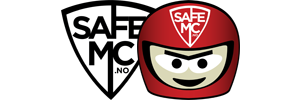Handlekurven er tom
Iridium Speil visir til alle LS2 FF397 Vector
Dette visiret kan benyttes på alle LS2 FF397 Vector Hjelmer

LS2 is always looking ahead. This is the only way to make history and go far.
Investing in R&D is like stepping on the gas. It enables us to do two things: to go faster than others and to have more followers. Breaking ground in order to be a benchmark.
We are driven by passion. Technicians, engineers and designers give their best to get the best from our helmets.
Our aim is our customers. They are our goal. We operate in a global market and our presence is worldwide. Such a diverse range of goals poses no obstacle. Wherever there are customers, LS2 will reach them to give them what they are looking for. All this is an on-going journey, and there are no pit stops: from work to quality and from quality to success. This is our formula. Our way of thinking and doing.
Each LS2 helmet, in berglass, composite or polycarbonate is composed of three main elements, the external shell, shock absorbing EPS liner and the numerous accessories such as comfort linings, method of retention, visors and ventilation.
The three main methods of production are as follows:
— Polycarbonate injected in a mix of ABS utilizing an exclusive process developed by our researchers named HPTT (High Pressure Thermoplastic Technology Resin). This high precision industrial process utilizes moulds sculpted from blocks of metal weighing several 100 kilos.
— Composite bers, combined with polymer resin which provide high abrasion resistance and are very dicult to penetrate.
— Carbon Fiber in multiple layers are also mixed with polymer resin. This procedure involves a process where the molds must be able to resist temperatures in excess of 120 C.
Carbon Fibre is a material used extensively in the aeronautical industry and of course in the highly competitive world of Formula 1 and Moto GP. It has incredible strength but extremely light. Four years of research and considerable investment has resulted in LS2 launching its first Carbon Fibre Helmet with a double visor system.
Once a shell has been removed from its mold it is checked to make sure it meets our exacting standards by our technical experts. Several layers of paint later and the graphics are applied, once in place the helmet is lacquered with anti UV and the process gives a unique touch to each helmet.
The final assembly of a helmet is then undertaken by a technician who follows a strict process for fitting of the EPS liner, retention strap and visor mechanism. And finally the comfort liner and user instructions. Each helmet then has a final quality check before being boxed ready for dispatch.
A certain number of our helmets are never sold as we batch test every model in our test laboratory. Each helmet is looked at in minute detail to ensure that quality and safety are paramount. We also verify that each model meets or exceeds the test standard required by its country of destination. This may be ECE, DOT ,BSI or indeed Snell. Numerous tests are undertaken on the EPS and the external shell for shock absorbtion. We also test the fit as many testing houses now take this into account. For example SHARP TESTING in the UK.
Trykk ENTER for å søke





Kommentarer